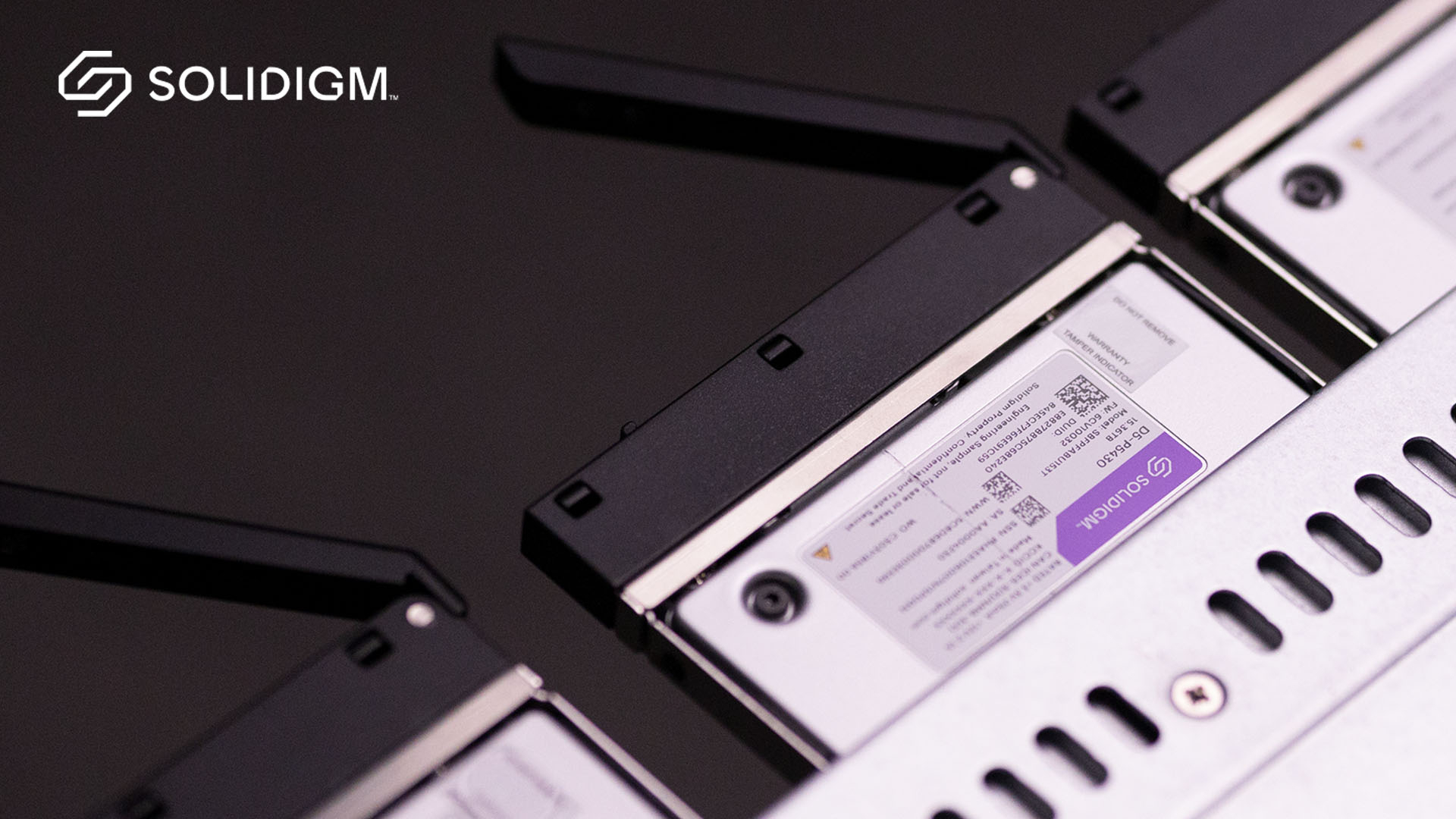This SSD vendor wants to use software to boost storage performance for free - here’s how
Interview: Solidigm tells us why it looks to software to optimize SSD performance

Back in May 2023, Solidigm, one of the biggest SSD vendors, announced that its new driver and software package that it says would boost 4K sequential tasks by up to 170% in what might some might consider to be black magic tricks.
The company, born from the acquisition of Intel’s SSD business by SK Hynix, is not the first one to promise that software will enhance hardware performance. Archrival Samsung also has its own software booster (Magician) for its SSD.
What follows is an emailed interview carried out with Ace Stryker, Product Marketing Lead, PC Hardware & Software at Solidigm. I asked him, amongst other things, why is software becoming more important for SSD and what the future could bring.
- It seems counterproductive, at first, for Solidigm to launch software to improve SSD performance so my first question is what's the rationale behind Synergy?
The idea is that traditional SSD performance improvements rely on innovation in two areas: hardware and firmware. These are great, but insufficient to really unlock a drive’s full potential. Hardware can give you faster NAND transfer speeds, higher layer counts, and more. Firmware can deliver optimizations to how data is cached and make the device feel more responsive.
But the third leg of the stool is software: how the host system sees and uses the SSD. An NVMe drive is good but leaves room for improvement. We are targeting those areas where we see an opportunity to optimize our own drives based on our in-depth studies of how PCs transfer data to and from SSDs under real-world conditions.
- In one use case, optimizations led to a triple figure improvement in random read speeds. Why can't these be achieved out of the box, without software assistance?
The specific improvements we’re focused on can only be delivered by improving the software layer. You can have the fastest, most capable SSD in the world, but if the operating system uses it sub-optimally, you’re always leaving performance on the table.
As an example, take the Smart Prefetch feature we launched in May. The driver observes read activity in real-time and if the stream is predictable (in technical terms: if it’s sequential and at low queue depth), it signals to the SSD: “Hey, the user already asked for items A, B, and C – let’s go ahead and fetch D and E before the request comes in.” Then when the request hits, boom: the data is already buffered, reducing the user’s wait time.
Are you a pro? Subscribe to our newsletter
Sign up to the TechRadar Pro newsletter to get all the top news, opinion, features and guidance your business needs to succeed!
That’s a capability that only exists because the software layer is looking at transfers as they occur. The hardware itself lacks that kind of visibility and proactivity without software help.
- Synergy comes as a driver and a toolkit that's compatible with SSDs from other manufacturers. What does that mean and why did Solidgm choose to support rival SSDs?
To be clear, the driver only sees and accelerates Solidigm SSDs, while the toolkit has features for everyone. To the question of why we’d extend toolkit features to everyone–well, tactically, it’s smart for us to support third-party SSDs in our toolkit because it expands our addressable market and drives downloads.
But there’s more to it: when Solidigm launched in December 2021, we promised “a new paradigm in solid-state storage.” We believe in pushing the industry forward, even if sometimes that means delivering a useful feature on a non-Solidigm drive.
- Is there equivalent Solidigm software for Linux/Mac users and for datacenter SSDs? Does it support RAID?
It’s a Windows-only offering today. We haven’t announced plans for other operating systems or for RAID support. But as you can imagine, we are constantly taking customer feedback and asking ourselves what would make the software more useful.
In the same way, we have a long-term hardware roadmap with future products planned, and we have a vision for the future of storage software that is much broader-reaching than what you see today.
- Given the fact that SSDs are now essentially mini computers (most have onboard DRAM and a processor), would it make more sense to educate users to the importance of firmware updates?
Firmware updates are an inevitability in computer hardware, but not something I’d venture to say most users are super interested in. They just want their PC to work as expected. To that end, when we do release an update for a Solidigm drive, the toolkit will notify the user and walk them through the update process.
- What could future versions of Synergy offer? Cloning? Intel Robson-like features (if pairing two types of NAND in one reader)?
The possibilities are exciting. We have a long list of candidate features that we are continually expanding, revising, and re-prioritizing. Our goal is nothing less than a “one-stop shop” for data and drive management in Solidigm Synergy. Stay tuned for more.
Read more from TechRadar Pro

Désiré has been musing and writing about technology during a career spanning four decades. He dabbled in website builders and web hosting when DHTML and frames were in vogue and started narrating about the impact of technology on society just before the start of the Y2K hysteria at the turn of the last millennium.